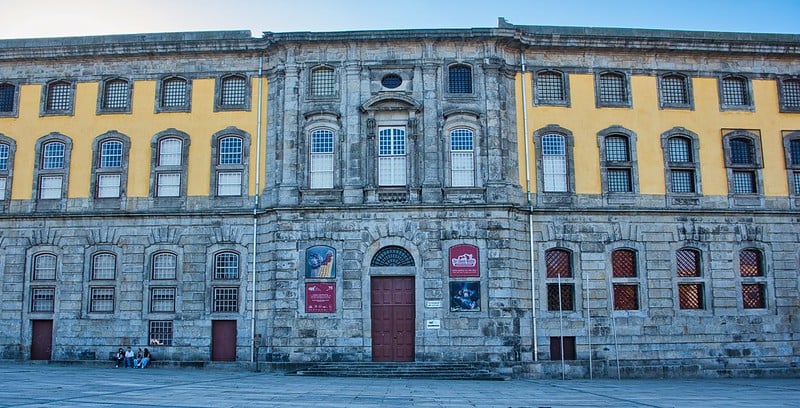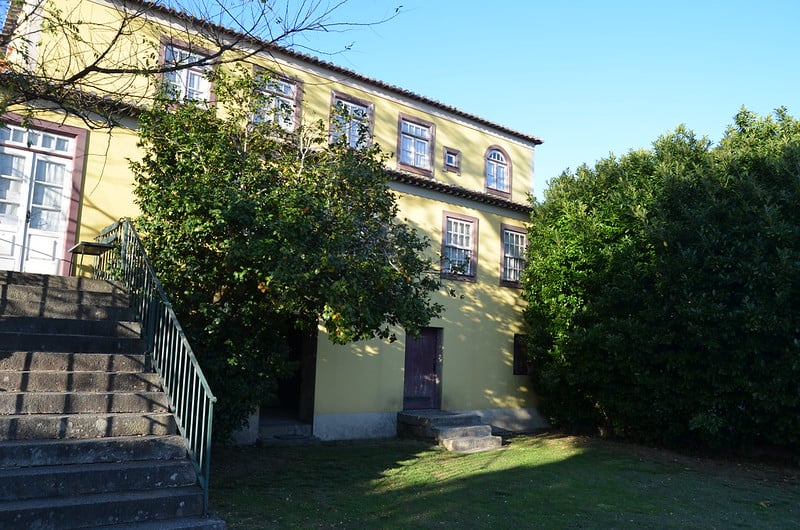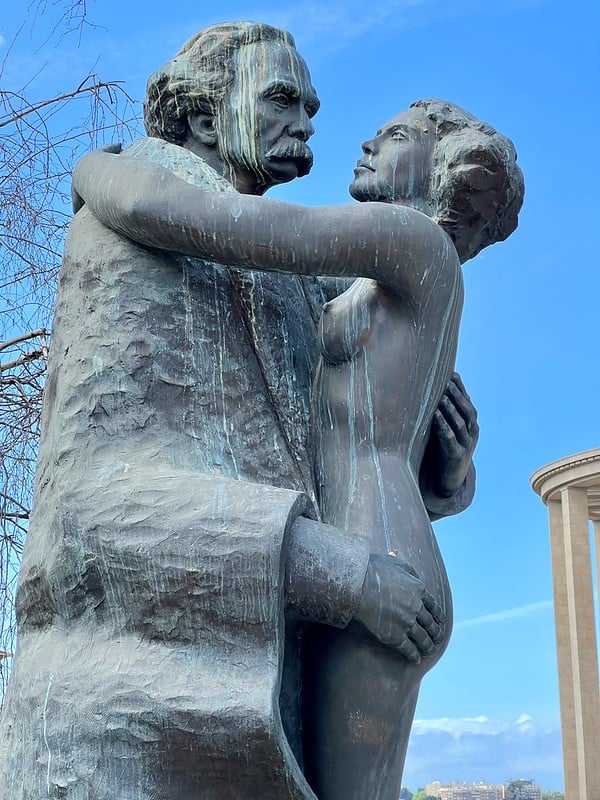Porto’s most famous love story took place in the 19th century. Camilo Castelo Branco and Ana Plácido challenged the city’s norms and sense of morality, and, boy, was their relationship tumultuous! Camilo, a renowned writer, and Ana, a married woman and also a writer herself, dared to defy societal conventions. Marriage, prison, going on trial, nothing could break the bond of these lovers. Let’s dive into their dramatic love story!
The Lovers
Camilo Castelo Branco
Camilo Castelo Branco, a man of letters and a literary virtuoso, was known for his Romantic melodramas and works of realism. He was born in Lisbon in 1825, under circumstances that would shape his tumultuous life. Orphaned in childhood and raised by relatives in northern Portugal, his upbringing was marked by a lack of discipline and formal education.
At 16, he married Joaquina Pereira de França and began a life of studies and early literary pursuits. He dabbled in medicine and theology in Porto but soon found his true calling in the world of literature.
Camilo’s life in Porto started in 1843. Despite academic failures, he immersed himself in poetry and published his first works. His life took some huge dramatic turns with imprisonment in 1846, accusations of theft, and the start of his journalism career. The death of his wife in 1847 led to a return to Porto, where he faced trouble due to his controversial writings.
Ana Augusta Plácido
Ana Augusta Plácido was born in 1831 to a bourgeois family in a small city. At 19, she married 43-year-old Manuel Pinheiro Alves, a prosperous Brazilian businessman from Porto. The marriage was arranged by her father, António José Plácido Braga, and her fiancé, a common practice then. However, Ana had been in love with writer Camilo Castelo Branco since she was 15, having previously met him at a dance.
The Relationship Blossoms
Although Ana was married to Manuel Pinheiro Alves, her connection with Camilo grew. This relationship blossomed alongside Camilo’s complex interactions with the religious and literary circles of the time, including his considerations of a religious career.
Ana was a spirited woman with a talent for writing, often using a male pseudonym – a common practice at the time. However, her love for Camilo led her to forgo her literary ambitions, dedicating herself to being a supportive wife and mother. She assisted Camilo with manuscripts, influencing many of his stories.
Ana, aware of the scandal their relationship would cause, chose love over societal approval. She left her husband, embarking on a journey with Camilo that would lead them through the highest highs and the lowest lows.
In 1859, Camilo and Ana Plácido traveled to Lisbon. However, their life was challenging, as they were two fugitives moving across the country, struggling with limited resources. On August 11th, 1859, the couple had a son, Manuel Plácido, who was legally declared the son of Pinheiro Alves.
As their affair became public, the scandal rocked Porto. Ana was forced into a convent in Braga, in an attempt to quell the flames of their love. But, like a phoenix rising from the ashes, Ana fled the convent, returning to Camilo’s arms. Their love was unbreakable, a testament to their devotion to each other.
The Arrest
In 1860, Ana’s husband, feeling betrayed, filed an adultery lawsuit against them, leading to their imprisonment in Porto at the Cadeia da Relação, now the current site of the Portuguese Photography Center.
Ana was captured on June 6th, 1860, and Camilo, after hiding in Entre-Douro-e-Minho, surrendered to the authorities on October 1st. In jail, Camilo enjoyed some comforts and was not confined to his cell all the time. He was visited twice by Dom Pedro V and managed to write his most famous and widely read novel, “Amor de Perdição,” in just 15 days. Ana’s presence was a constant in Camilo’s life, even as they faced societal judgment and legal troubles.

Marriage and Later Years
In October 1861, Ana and Camilo were cleared of charges, thanks to Dr. José Maria Teixeira de Queiroz. Eça’s father and a Court Counselor, Queiroz frequently visited the writer to shape his legal defense. Although grateful to Queiroz, Camilo later engaged in a heated debate with Queiroz’s son.
In 1862, the couple moved to Lisbon. There, their son, Jorge Camilo Plácido de Castelo-Branco, was born on June 26, 1863. That year, following Pinheiro Alves’ death, Manuel Plácido inherited a house in São Miguel de Ceide, Famalicão. The family relocated there in 1864, where their third child, Nuno Plácido, was born on September 15.

Despite living in Famalicão, Camilo frequently visited Porto. He often went to libraries, theaters, and beaches in Leça da Palmeira and Foz. In 1868, he married Ana Plácido in Porto and lived on Rua de Santa Catarina. The family also traveled to Lisbon and Coimbra, focusing on their children’s education. In 1868, Ana and Camilo co-founded A Gazeta Literária do Porto. In 1872, they hosted Brazil’s Emperor, D. Pedro II, in Porto.
Camilo’s personal life, however, was marred by tragedy. The insanity of his son and his own declining health cast a shadow over his later years. In 1890, overcome by illness and despair, Camilo ended his life, a tragic conclusion to a life lived with fervent intensity.
Ana’s life was equally marked by literary achievement and personal struggle. Her novel “Herança de Lágrimas” reflected her insightful perspective on the complexities of female morality and choice. After Camilo’s death, Ana continued to live in the home they shared, her final years spent in the shadow of her great love. She passed away suddenly in 1895, leaving behind a legacy of literary and personal resilience.
The love story of Camilo and Ana was a tale of passion and a narrative of defiance against the rigid norms of their society. Their romance is a story of hope and inspiration for those who dared to love beyond the boundaries set by tradition, a timeless tale that continues to inspire and captivate.
The Portuguese Photography Center and the Amor de Perdição Statue
The prison where Camilo and Ana were imprisoned is now the Portuguese Photography Center in Porto. Since 2012, a statue with the same name as Castelo Branco’s novel “Amor de Perdição” stood in the square. Sculpted by Francisco Simões, it depicted Castelo Branco fully dressed, being embraced by a naked Ana Plácido.
In September 2023, the mayor of Porto decided to tear it down viewing it as inappropriate after a small group petitioned against it.
The relationship between Camilo and Ana, even 175 years later, continues to stir controversy but will never be forgotten in the hearts of the Portuguese people.


